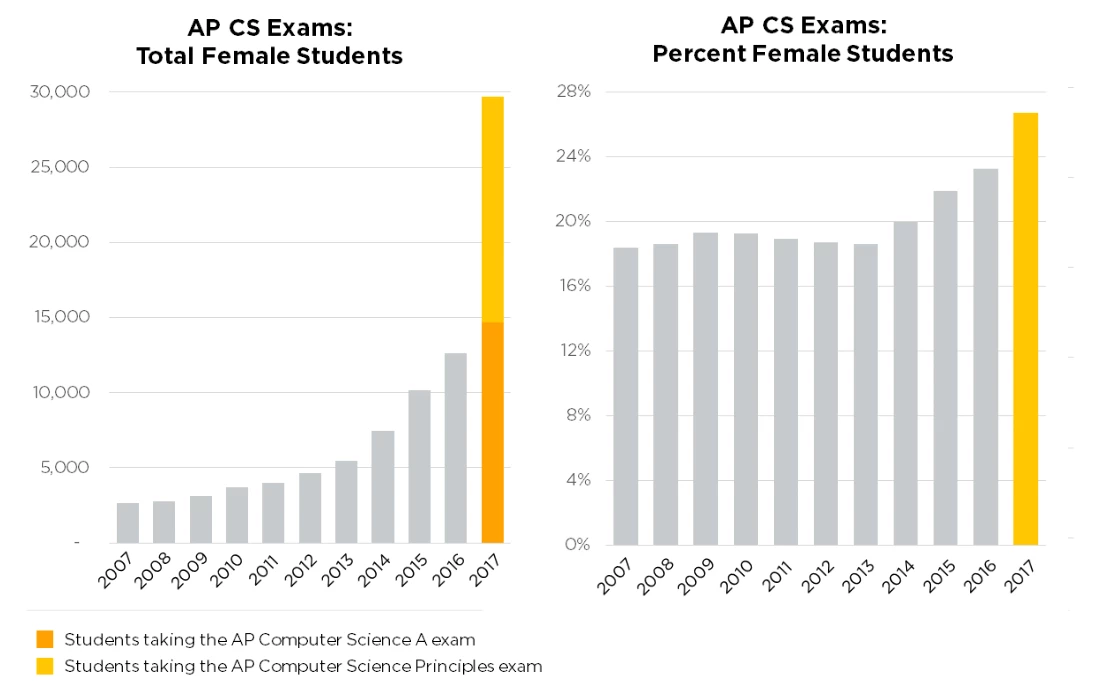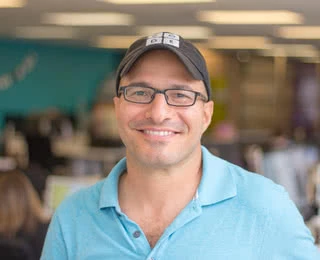
Today, for the International Day of Women and Girls in Science, we celebrate the progress made towards reducing the gender gap in computer science, and we urge schools worldwide to help balance the scales in this critical 21st century subject.
As the founder of Code.org, I’m often asked whether every child needs to “code.” First of all, it’s critical to broaden the conversation to all of computer science, which includes not only coding, but also computational thinking, data science, machine learning, cyber security, networking, robotics, and many other areas of study. In the 21st century, a basic background in this subject is just as foundational as learning biology, chemistry, or math. Not every child will choose to study computer science, but they should all have the option to.
Computing occupations are the fastest-growing, best-paying, and now the largest sector of all new wages in the U.S., yet women comprise only 26 percent of the tech workforce, and under 20 percent of computer science students in the education pipeline. This trend is common in most developed countries. And regardless of the career opportunities, a student can benefit from learning how to design an algorithm, or how the Internet works, regardless of whether she wants to grow up to be a lawyer, a doctor, a teacher, a farmer, a scientist, or a coder.
We should consider it unacceptable that the majority of schools in the modern world don’t even offer a course in the subject. We should consider it unacceptable that most girls don’t even have a choice to study this field, and even when they do, participation in the subject is dominated by boys.
This isn’t just a problem in tech-advanced nations. Schools in the developing world can also teach foundational computer science. The basics can be taught in a classroom without computers. At a time when developing countries are seeing double-digit growth in smartphone penetration and internet access, students in these countries can all benefit from understanding more about the technologies that will impact their society.
Change has begun in schools worldwide
In the last few years, schools globally have made real strides towards gender equality in computer science. Starting in 2013, hundreds of thousands of educators, in primary and secondary schools in every single country, have introduced over a hundred million students worldwide to computer science as part of the global Hour of Code campaign. Almost half of the participating students have been girls. This progress isn’t limited to any one school or one effort; it is thanks to hundreds of partners working together.
In the U.S., the Advanced Placement (university-level) computer science course in secondary schools has seen a skyrocketing participation by girls in the past four years. Although participation among girls is still only 27 percent of the course, it has shown steady improvement, year over year, since 2013.

At the global level, on the Code Studio coding platform that my team at Code.org manages, 45 percent of all “coders” are girls, adding up to over 10 million girls learning computer science in schools worldwide. These students represent every country on the planet, and many are even learning in refugee camps. If only a tiny fraction of the girls on Code.org pursue their studies once they graduate to university, they would outnumber the gender gap in university computer science programs. And even if they don’t continue to pursue a degree in computer science, they are learning foundational basics that will help them prepare for the 21st century.
We still have a long, long way to go
The last four years signal the first improvement in gender diversity in computer science, after decades of decline. While we applaud the educators in primary and secondary schools that have made such valiant efforts to balance the scales in this critical subject, we still have a far, far way to go.
For starters, the majority of schools don’t offer any courses in computer science, leaving most children without an opportunity to study this subject, regardless of gender. And even in schools that teach computer science, reaching 50/50 gender equality is still many years away. Improving these numbers will not only lead to gender balance in computing occupations, it will also ensure that girls and boys are equally prepared with the foundational knowledge of computer science that is increasingly critical for all careers and fields of study.
However, for the first time in decades, the numbers are headed in the right direction. Hundreds of thousands of educators and schools are motivated to help, and 10 million girls have shown that change is possible. Today, we celebrate the International Day of Women and Girls in Science by recognizing these girls. We thank their teachers, and we call on educators worldwide to follow their lead.


Join the Conversation